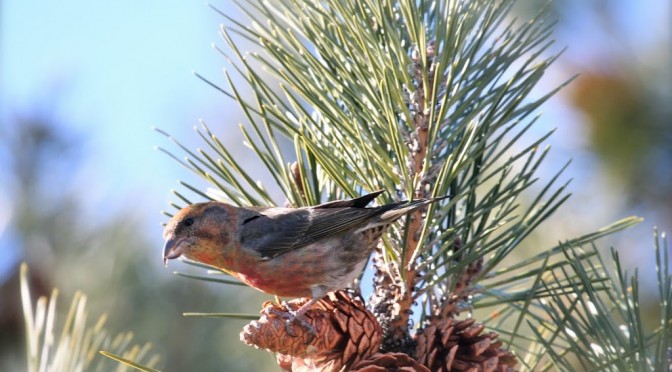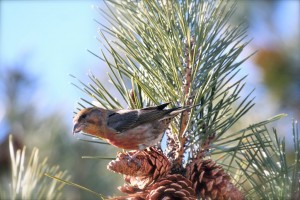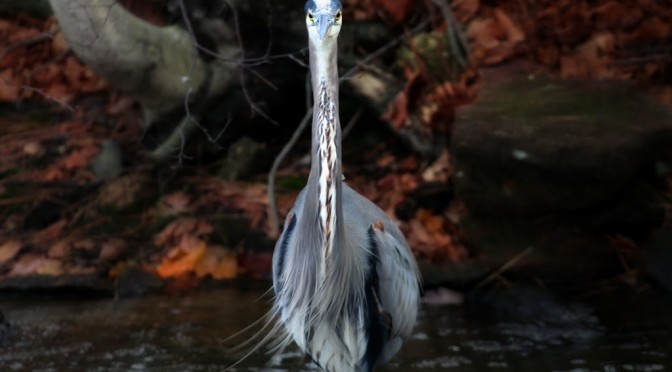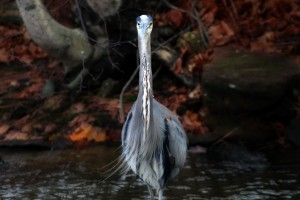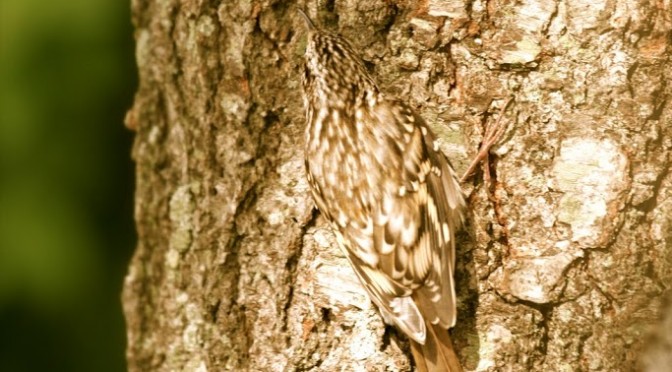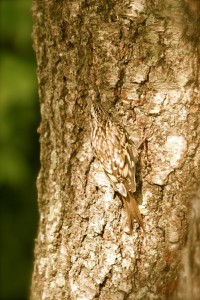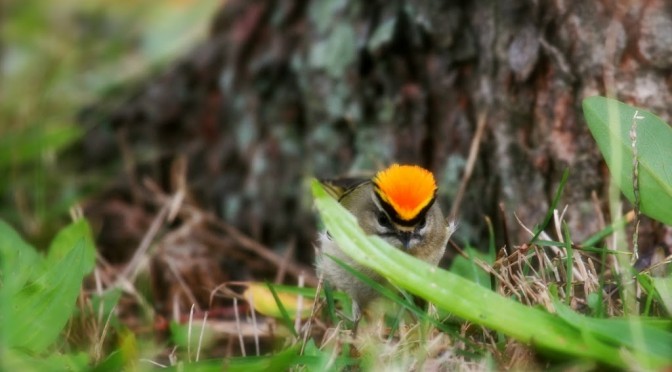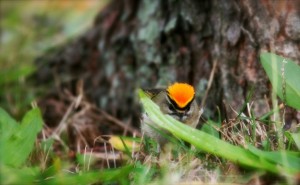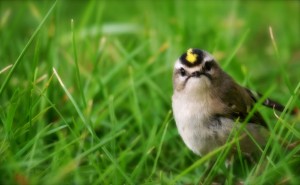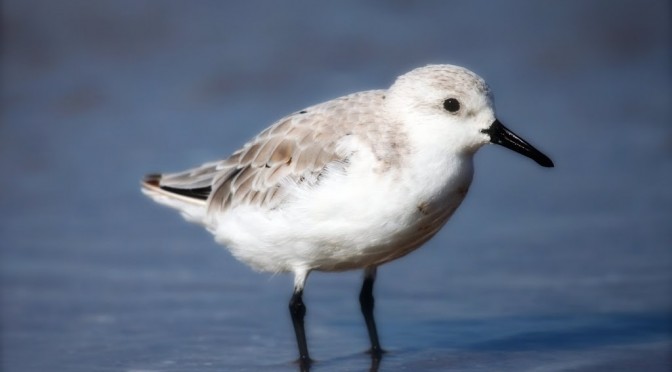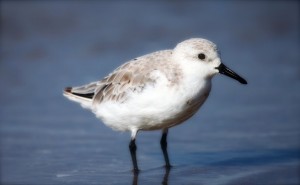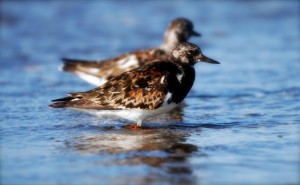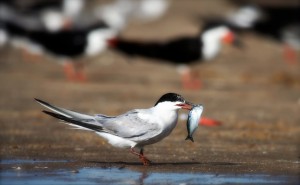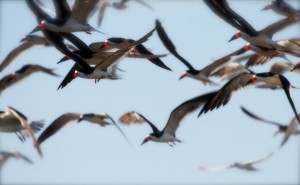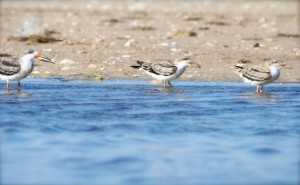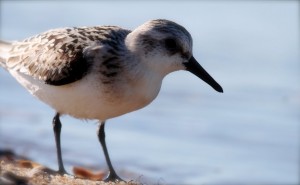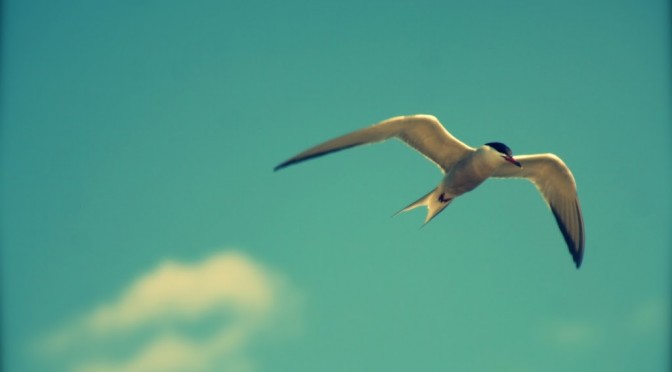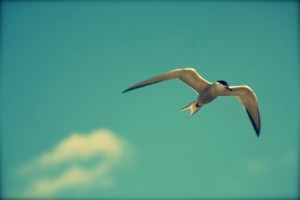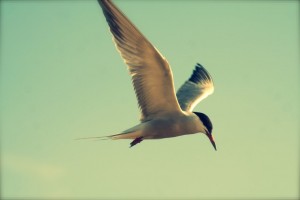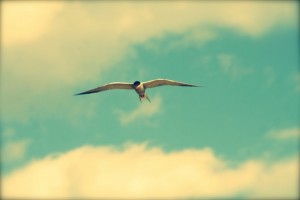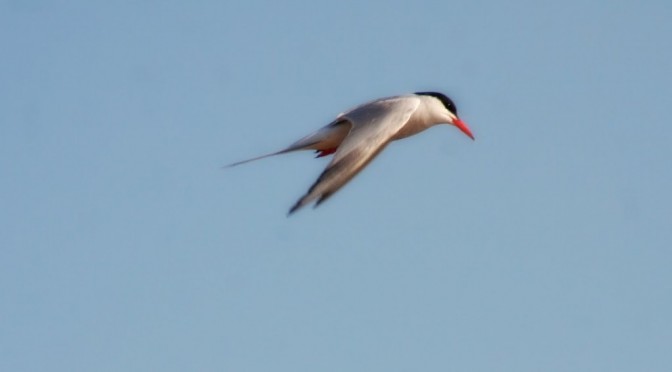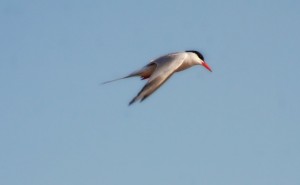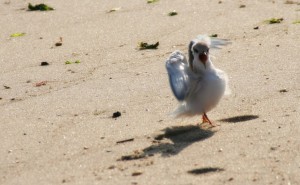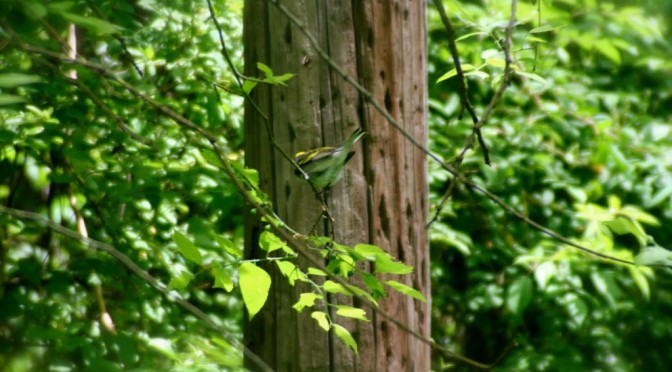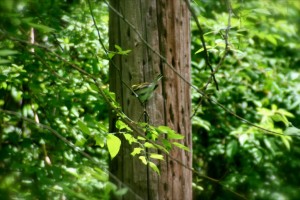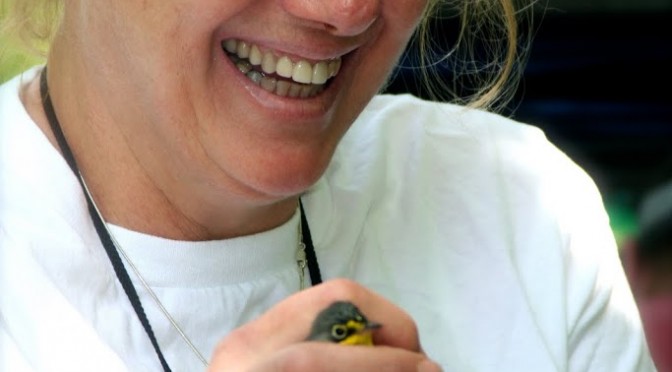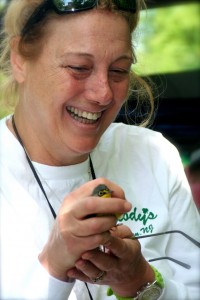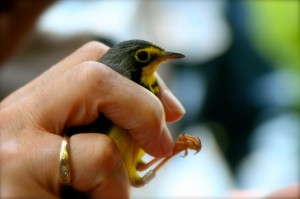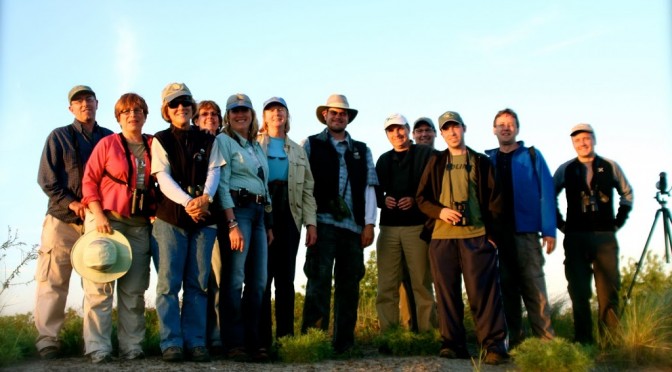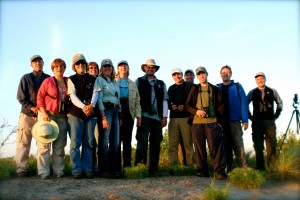In Long Branch, we stand beside a maintenance shed
of the county park service,
with its four-wheel drive pickup trucks
its piles of road salt
and its border of Japanese black pines.
We spend frigid minutes
shivering in the wind,
the sun warming our faces
and the hint of a warbled song
drifting down in a shower of winged scales.
With tear-stained cheeks and icy fingers
we point past the chain-link fence
to a pile of dirty snow
and a small reddish bird with crossed bill,
quenching its thirst.
Beyond the small group of latecomers, I watch
the green expanse of the Atlantic,
the gray gull, small and perfect as a toy,
that glides across the horizon.
We head back to the warm car;
our pursuit complete,
the promise of cocoa
or an overpriced Windmill hotdog,
with chili and cheese.
– – – – – – – – – – –
I can’t say anything about the Red and White-Winged Crossbills here at the Jersey Shore that hasn’t already been said, other than that they’re still in their expected place at Seven President’s Park. For whatever reason, I waited until the coldest day ever to go see them. Neat birds… certainly worth the frigid temperatures.
Crossbills are the only family of birds that have crossed mandibles; what might look like a deformity is, in fact, an adaptation for the bird’s feeding habits. Crossbills insert their closed bill into the side of a pine cone and then open it, tearing out the scale and exposing the seed within, which is then scooped out by their odd-shaped tongue. Aside from the quiet trilling, it was the sound of pine cones being torn open that gave away the Crossbills’ presence and allowed us to spot them in the shadowed pine trees.
These birds have been present at the park for nearly a month and those of us that venture over to see them must present something of a curiosity to people in the neighborhood… enough that they drive by to ask what in the world we’re looking at.
: )
Crossbills wander widely in the winter months, as do birders looking for rarities.
